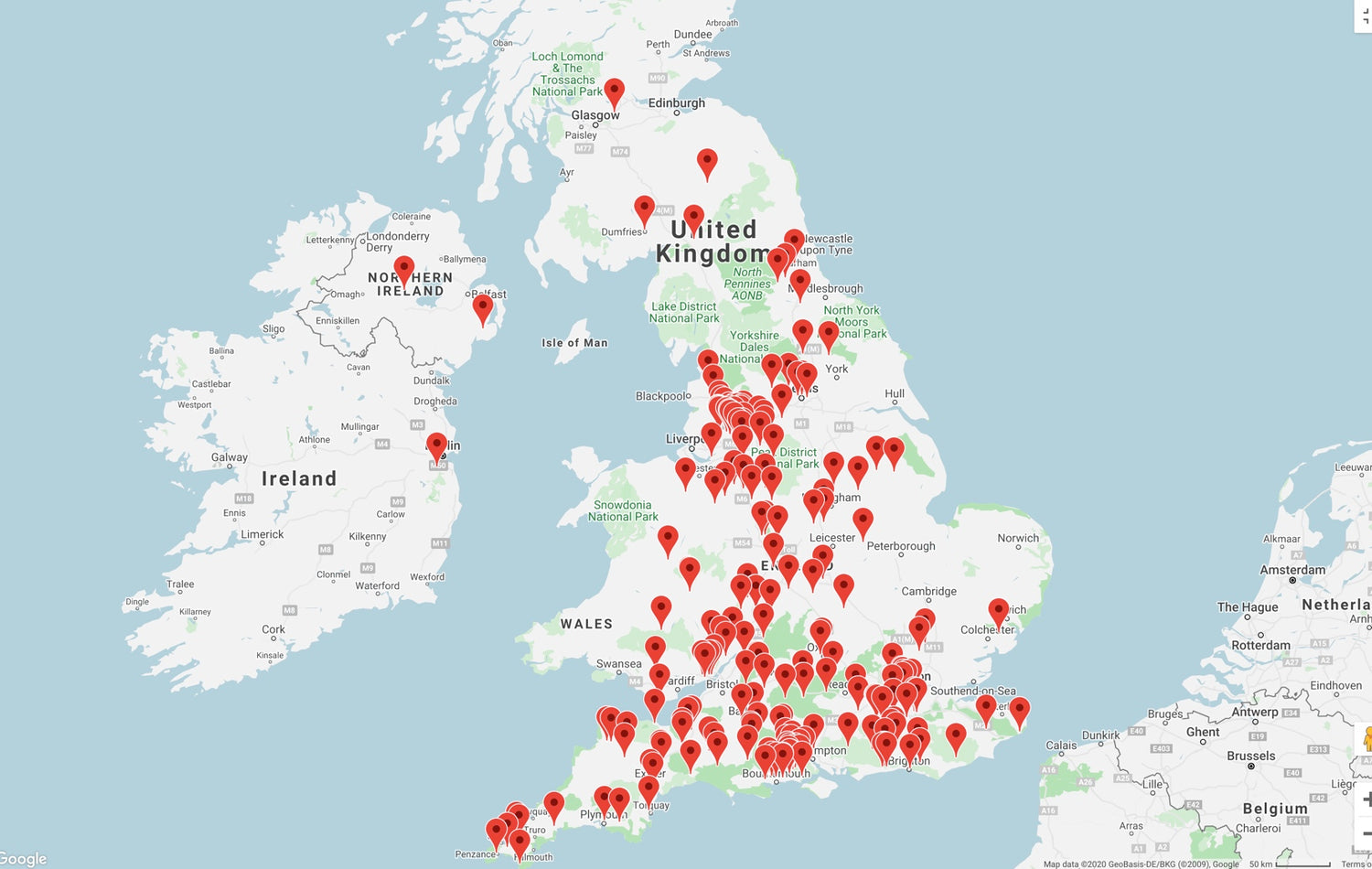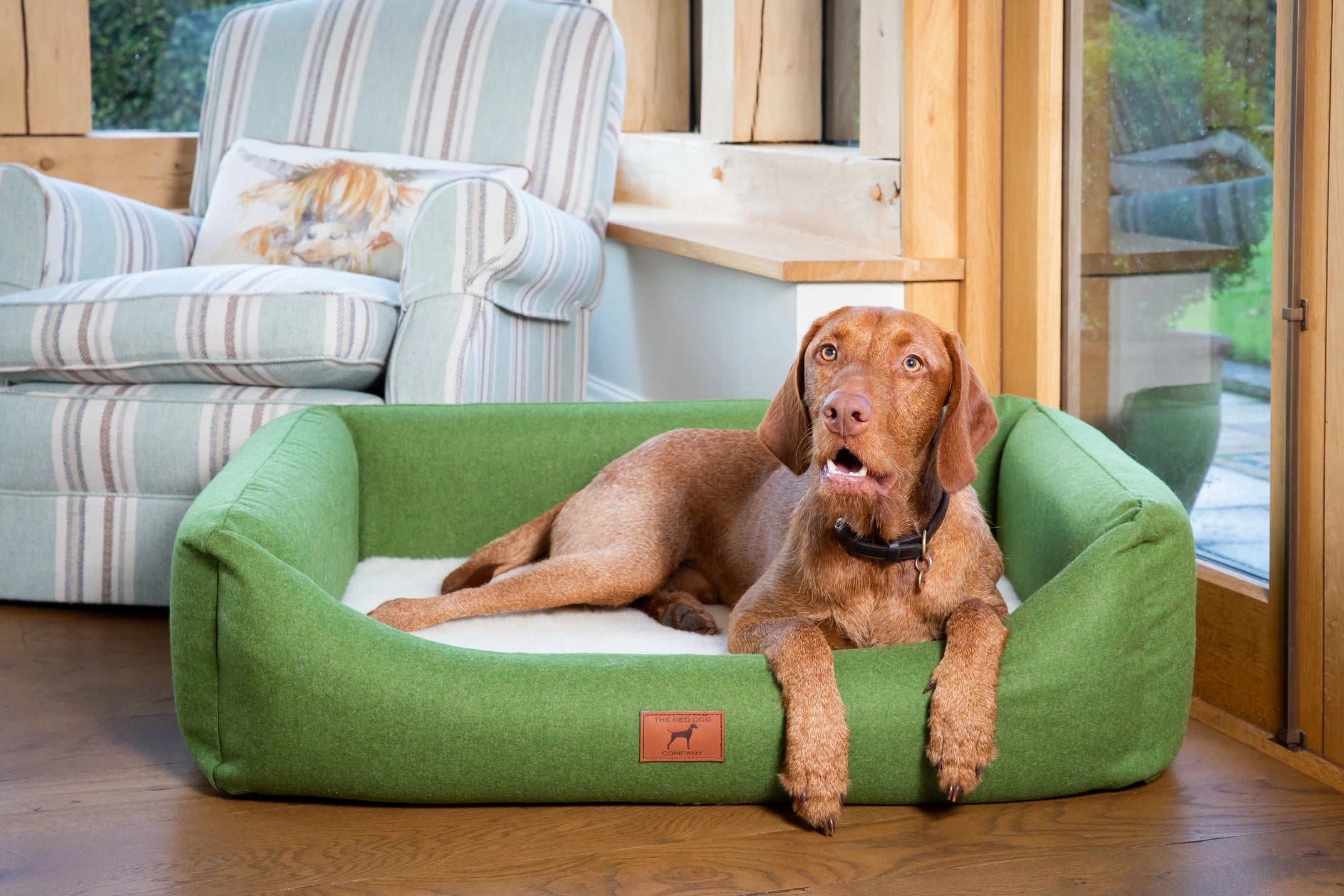Dog owners panic at the thought of this disease yet one must remember, that whilst hundreds of thousands of dogs go out enjoying muddy woodland walks each winter, only a couple hundred cases have ever been confirmed in UK.
Despite a huge amount of work, the cause of this often fatal disease remains elusive. Without knowing the cause it is impossible to put in place satisfactory strategies to avoid disease, hence the high level of concern from veterinarians and dog owners alike.
How long have we been aware of Alabama Rot?
The first cases of Alabama Rot, scientifically known as CRGV (Cutaneous and Renal Glomerular Vasculopathy) , were described in a group of Greyhounds in Alabama, America in the 1980s and further cases have been reported in America since, again in Greyhounds. These dogs were raw fed and there was initially a suspicion that there could be a link to bacterial toxins produced by E. coli in the food, this was never proven.
In the UK a single case was reported in a Greyhound in 2000. Then, many years later 6 independent cases of CRGV in the UK were reported and confirmed in December 2012. There initially seemed to be a hotspot of cases in the New Forest region. At the time of writing, January 2020, the UK has seen 204 confirmed cases of CRGV across 43 counties. Only 15 dogs that were strongly suspected of having the disease are believed to have survived.
What are the symptoms?
CRGV usually presents with ulcerative skin lesions, that the dog may be licking at, of between approximately 0.5-5cm in diameter. Sometimes there can be a more diffuse reddening and puffiness to the skin lesions. The lesions are often, but not exclusively, on the lower limbs and paws or around the muzzle. Depending on the skin lesion distribution, the dog may be lame. Where there are tongue lesions they tend to be well demarcated, solitary and focal lesions. At the point of presentation many dogs appear well in themselves apart from the ulcerated skin. The average time from presentation with skin pathology to onset of signs of Acute Kidney Injury (AKI) is 4days, but has been up to 10 days. AKI signs include lethargy, reduced appetite, increased thirst, high temperature and vomiting. In addition, some dogs have shown increased tendency toward bleeding eg bruising or nose bleeds.
Most cases of CRGV have presented with skin lesions followed by Acute Kidney Injury (AKI) but there have been some cases with only skin sores and no kidney involvement. A few cases have presented with AKI prior to the onset of skin lesions and a few with only AKI.
What causes the symptoms we see?
Pathologists have consistently found these dogs to have damaged blood vessels that result in clot formation and disruption to blood flow preferentially to areas of the skin and or kidneys, but not other organs. This is called a thrombotic microangiopathy (TMA) and the reduced blood flow leads to cell death and organ dysfunction. Scientists are searching for triggers, such as bacterial toxins, that could potentially be implicated.
Which dogs are most likely to get CRGV?
There has been no age, weight or sex predilection noted across these 204 cases. A range of breeds have been identified with the disease in UK and some of the more commonly affected breeds include English Springer Spaniel, Labrador Retriever and Hungarian Vizsla.
No link has been drawn between the UK cases and their diet, specifically with respect to raw feeding.
No evidence exists that the disease is spread directly between dogs but some owners (not verified by vets) have reported skin sores developing in in-contact dogs without them ever developing Acute Kidney Injury.
When are dogs at risk?
CRGV cases have most commonly, although not exclusively, been recognised between November and May each year, with peak incidence in February. The significance of this seasonal distribution is unknown but it has been theorised that wet/muddy conditions may harbour an environmental trigger. This is unlikely to be the whole story and it is possible that some dogs are predisposed to developing the disease as many dogs are walked in the same location as an affected dog without developing the disease. Some dogs that have been walked together have become affected concurrently. Therefore, people have suggested washing dogs after walks but with so little currently known, it is hard to give preventative advice with scientific backing.
When will we know more?
Investigations are ongoing and a national charity has been set up to raise funds for research. Updates on case numbers and research findings can be found on Anderson Moore’s Veterinary Specialists’ website. https://www.andersonmoores.com/vet/CRGV.php
CRGV has received a lot of media attention and with so many questions regarding this disease remaining unanswered, it is understandably hugely concerning to dog owners. It is, however, important to stress how rare this disease is. If your dog has an unexplained skin lesion take them to the vet but be mindful that thankfully there are many more likely causes than CRGV.
Alison Lambert MA VetMB MRCVS
When Alison isn’t working as a vet she is helping the Red Dog Company make the very best luxury dog beds and accessories available.



